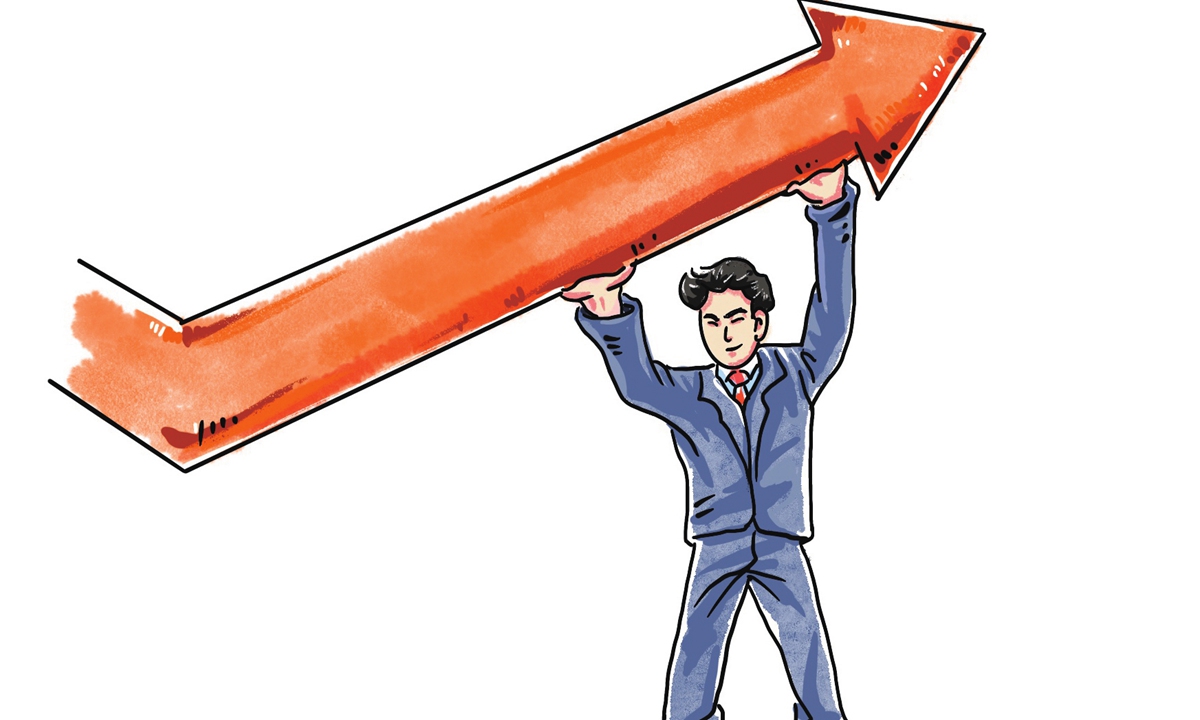Deflation, inflation concerns largely unwarranted
By Cao Heping Source:Global Times Published: 2020/6/15 21:33:40

Illustration: Tang Tengfei/GT
China recently revealed its 2.4 percent consumer price index (CPI) and a 3.7 percent decline in its producer price index (PPI) for May, both lower than previous forecasts. Concerns have risen that the CPI in the second half of the year may decline to a range of 1-2 percent, leading to deflation and a prolonged economic recovery.As the economy has just begun to resume and the risk of a further coronavirus outbreak lingers, the potential for deflation is a common concern. However, rather than a simple price drop, deflation emerges when prices fall below a given threshold, showing a tight money supply, manufacturer liquidity shortage, inventory buildup and economic slowdown. At the same time, a money supply shortage will deter mature investment projects and slow down medium and long-term economic growth due to weakened investment.
May's 2.4 percent CPI was a similar reading to last May's 2.7 percent, which was not a figure indicting deflation. Given an increased inventory amid the epidemic and an increased supply in the summer, the price drop was predictable. It is within a reasonable range as the government has set a target inflation rate of 3 percent.
It is true that the CPI has dropped from 5.4 percent at the beginning of the year, and the export inventory has turned to the domestic market due to interrupted cross-border logistics. Therefore, a CPI below 2 percent is possible, but it is not yet time to worry about deflation.
Though the CPI and PPI in May showed a weaker macro-economy than expected, they have dismissed the dark predictions made before the epidemic was brought under control. Wuhan in Central China's Hubei Province experienced about 50 days of shock from its lockdown, which began on January 23 and continued until its temporary hospitals were closed on March 11. That had a short-term impact on the nation's overall economic growth, as well as a limited impact on residents' consumption willingness.
When consumer expectations remain generally unchanged, macro-economic recovery is sustainable under the conditions of reasonable and moderate money issuance, and the economy's inherent dynamic mechanism not meeting concerns of deflation.
Some are also worried about inflation in the second half of the year if trillions of yuan worth of new infrastructure projects are started. But it is no longer appropriate to talk about deflation or inflation in terms of a seesaw relationship between money supply and a rising CPI.
Based on the trend toward macro-monetary policies in the last three years, prices this year will follow the trend of fluctuations at around 3.5 percent. As an expanded combination of fiscal and monetary policy is needed in the wake of the pandemic, a higher CPI in the range of 3.5-4 percent, or even higher, does not warrant worry. Even a fluctuation of around 3.5 percent, taking into account statistical errors, makes it hard to distinguish whether policies have taken effect.
Due to previous years' tightened capital management policies, liquidity has remained tight for some time. With more company inventories, more liquidity and stronger boosts for consumption are needed, especially under the critical circumstances of the pandemic.
China recently rolled out a series of measures to resume economic growth after the virus was largely brought under control, including issuing consumption coupons, reducing costs of small businesses and taking out new infrastructure projects. Projects worth of tens of trillions of yuan have been put in place, and China's economic recovery has entered its third month. As an accelerated economic growth trend for the second quarter is not yet evident, more active monetary policies in accordance with macro-fiscal policies are now needed.
The author is a professor of economics at Peking University in Beijing. bizopinion@globaltimes.com.cn
Posted in: EXPERT ASSESSMENT,FEATURE